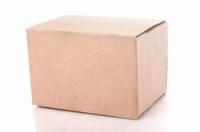VIDEO: SLR camera for beginners
If you buy a reflex camera, but have never dealt with photography in detail before, turn the program switch on 'Automatic' sets and shoots wildly with any compact camera, fails to recognize the enormous potential that these modern cameras have Cameras. The technology and the Lenses are designed to take aesthetically pleasing images. Those who have mastered the basics and deal in detail with f-stop numbers, exposure times, ISO values and focal lengths will quickly have a lot more fun with their new toy. Even after initial unsuccessful attempts, however, you should not give up immediately. It is said that the first 10,000 photos are the worst. Good things take time.
Technology for beginners
- Focal length. The focal length is the unit used to describe the image section of a lens. The larger this number, the smaller the image section. While a wide-angle lens with 18 mm gives a very extensive image of the subject, so reduced With a focal length of 200 mm, the image section increases many times over, the motif appears larger and closer. Standard on most digital SLR cameras is a zoom lens that covers a wide range of focal lengths, often from wide-angle to telephoto. So a beginner is well advised: One turn of the lens is enough and you are prepared for any situation.
- Cover. The aperture is likely to be the most confusing for beginners. It determines how much light penetrates the sensor and how large the focal plane is. The smaller the number, the more open the aperture, the lower the level of focus. With the aperture open and a motif in the foreground, a nice effect is created: a blurred area in the background. If a landscape is to be photographed or if value is placed on an image that is as sharp as possible, the aperture value should be selected as high as possible. However, you have to consider that with a high aperture value, the exposure time is longer because less light comes through the lens. This shouldn't be a problem during the day, but in the evenings and at night you will have problems without a tripod.
- Exposure times. The exposure times indicate how much time the camera needs to capture enough information (i.e. light) to expose the sensor sufficiently. The values for common camera models range from 1/4000 second to half a minute. For values from about 1/60 of a second and longer you should use a tripod so as not to blur the images. The value of the exposure time is directly dependent on the aperture value. The higher the aperture value, the longer the exposure time and vice versa, the lower the aperture value, the lower the exposure time. Think about beforehand whether you want to have a picture that is as sharp as possible or whether you want to play with the blurring.
- ISO value. Digital cameras Just like the usual analog films, they have a sensitivity value: the ISO number. The lower this number, the sharper the image. For this, however, the exposure must be long enough. The higher the ISO number, the shorter the exposure times. However, at the expense of the image quality. Image noise is created, which is perceived as annoying, due to the fact that the electronics in the housing are trying to calculate missing information. This image noise is particularly noticeable in large areas of the same color. So you should work with the lowest possible ISO number in order to achieve a good result.
Taking photos of the New Year's Eve fireworks - this is how beautiful pictures can be taken
When the rockets soar into the sky at the turn of the year, many ...
Avoid automatic motif - it is better to experiment with the reflex camera
- Every digital camera has automatic motif functions that can be used to take beautiful photos in any situation. However, if you want to delve deeper into the subject and take more demanding photos, you should do without it and rather experiment with manual programs.
- The automatic timer is recommended for beginners. This enables satisfactory results to be achieved quickly and easily. The program is marked with an 'A' for most camera models. You determine the aperture value (you now know what that is), the camera automatically calculates the exposure time for you.
- No matter where you are, experiment with sharpness and blurring, with objects near and far, with foreground and background. One 'click' alone will certainly not stop there.



